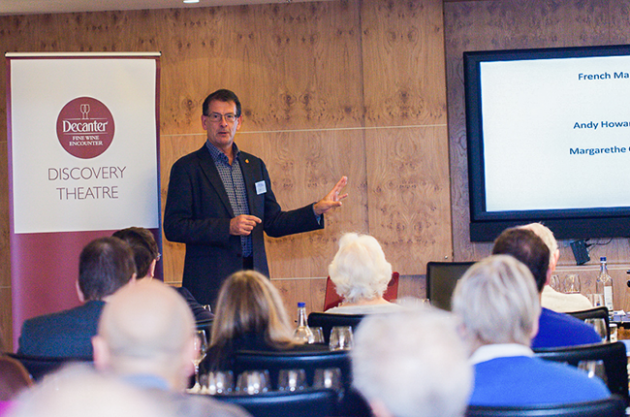Malbec may be primarily associated with Argentina – particularly Mendoza – but its original home in Cahors in south west France is enjoying a revival, guests discovered at the Decanter Fine Wine Encounter.
There was an informal atmosphere inside the Cahors Malbec masterclass, with Andy Howard MW keen to open up the discussion by getting guests to share their thoughts.
History of Cahors
Howard started with some history and facts about the area; in the Middle Ages, Cahors was one of the biggest and most important cities in France, and there was six times as much wine production in the region compared to today.
Cahors only got appellation status in 1971, so it is ‘very much a modern phenomenon’, Howard said.
Malbec itself has around 30 different names in the Cahors area. ‘But for the sake of today’s talk, we’re going to call it Malbec – because I can pronounce that,’ quipped Howard.
Cahors Malbec
Cahors wines must have a minimum of 70% Malbec, often blended with Merlot, to soften, or Tannat, to sharpen.
‘Malbec on its own can have a good impact when you first taste it, but then sometimes there’s a hole in the middle… it can be good to have another grape to flesh it out,’ Howard said.
The wines on show demonstrated the range that can be found in Cahors; large and small scale wineries, some more understated than others. Howard also pointed out that the conditions for the vintages are often similar to Bordeaux, as the areas are not far from each other.
‘These are primarily wines that go well with food,’ observed Howard. ‘Food of the area is quite heavy… this kind of wine goes well with meat, roast duck, confit duck. Not a wine for seafood I don’t think!’
The first wine of the tasting, Château Vincens was from a small, family owned winery, with an understated style; a fresh violet character on the nose, and plenty of density, structure and blackberry on the palate.
This contrasted significantly to the second wine from Château Lagrezette – owned by the owner of Cartier – which was ‘quite a different animal’. Howard observed that it was more New World in style, and a ‘fairly well put-together wine’. He also noted that ‘I think with all these wines, I’d be tempted to wait [to drink them]’.
Some of the wines divided opinion. Several guests said they found the fifth wine, Château la Reyne, Vent d’Ange 2011, too ‘New World’ in style. But, Howard found it full of black fruit, very drinkable and ‘not a blockbuster wine’.
On the Château Pineraie, L’Authentique 2010, made from 100% Malbec, Howard said ‘there
was a lot going on in this wine’ and that it would benefit from longer in the cellar.
Cahors vs Mendoza
Inevitably, comparisons with Mendoza were made. ‘The style you get in Cahors is not the same as the style in Mendoza,’ said Howard – prompting a member of the audience to ask whether French winemakers are trying to emulate the Argentinians.
‘I think there’s an element of that,’ said Howard. ‘I personally think there has been a move in Cahors to emulate the weight and concentration that Argentina has… for me, they should aim more for the finesse and elegant style.’
The full list of wines tasted:
• Château Vincens, Origine 2012
• Château Lagrezette 2012
• Château Famaey, Cuvee X 2011
• Château Gautoul 2011
• Château la Reyne, Vent d’Ange 2011
• Château Pineraie, L’Authentique 2010
See also:









